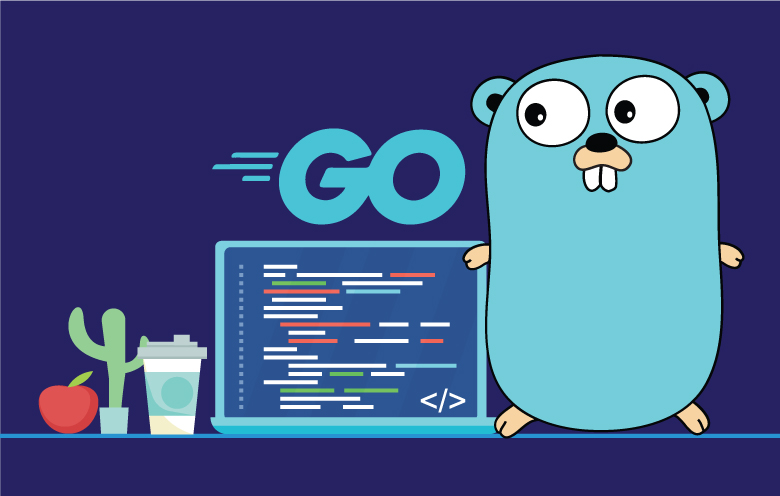Category: Mastering Go: From Basics to Advanced Techniques and Best Practices
-

Appendices:
•
Useful Go Tools and Libraries 1. Build and Dependency Management Tools 2. Testing and Benchmarking Tools 3. Code Quality and Static Analysis 4. IDEs and Editors 5. Web Frameworks 6. Database Libraries 7. Networking and HTTP Libraries 8. Concurrency and Parallelism 9. Utilities and Miscellaneous Conclusion These tools and libraries…
-

Conclusion:
•
Recap of Key Concepts Recap of Key Concepts in Go Programming Basics and Syntax Go is known for its simplicity and efficiency, offering a concise syntax that emphasizes readability and maintainability. Key concepts include: Data Types and Structures Understanding Go’s data types and how they are utilized: Functions and Methods…
-

Chapter 14: Best Practices in Go
•
Code Organization and Project Structure Introduction Code organization and project structure are crucial for maintaining readability, scalability, and maintainability in software projects. This chapter delves into the principles, best practices, and tools for organizing code and defining project structure effectively. Importance of Code Organization Organizing code systematically offers several benefits:…
-

Chapter 13: Deployment and Maintenance
•
Building and Distributing Go Applications Building and distributing Go applications efficiently is a key part of the software development lifecycle. This chapter provides a detailed guide on compiling, building, and distributing Go applications for various platforms. Setting Up Your Go Environment Before you can build and distribute Go applications, ensure…
-

Chapter 12: Advanced Topics
•
Reflection and Generics Reflection in Go Reflection is a powerful feature in Go that allows you to inspect and manipulate objects at runtime. It provides the ability to introspect types, access and modify values, and dynamically invoke methods. The reflect package is the cornerstone of reflection in Go. Basics of…
-

Chapter 11: Testing in Go
•
Writing Unit Tests Unit testing is an essential practice in software development that ensures individual components or functions work as expected. In Go, unit tests are written using the testing package. This section will guide you through the basics of writing unit tests, setting up test files, running tests, and…
-

Chapter 10: Database Interaction
•
Database Connection in Go In Go, you typically connect to databases using specialized drivers or libraries that provide a Go interface to interact with the database. Here’s an overview of connecting to databases and performing basic operations: Choosing a Database Driver Example: Connecting to MySQL Database To connect to a…
-

Chapter 9: Building Web Applications
•
Introduction to Web Frameworks in Go Web frameworks are essential tools in modern web development. They simplify the process of building web applications by providing pre-written code, components, and utilities. In Go, several web frameworks enable developers to quickly build robust, scalable, and maintainable web applications. This section explores the…
-

Chapter 8: File Handling and I/O
•
Reading and Writing Files Handling file input and output (I/O) is a common task in many applications. Go provides a robust standard library package, os, to work with files. This package, along with other utilities from the io and bufio packages, makes file operations straightforward and efficient. Reading Files To…
-

Chapter 7: Error Handling and Debugging
•
Error Handling Strategies Error handling is a critical aspect of software development, and Go provides robust mechanisms to handle errors effectively. In this section, we will delve into the principles and practices of error handling in Go, ensuring your programs can gracefully manage and recover from unexpected situations. Understanding Errors…
-

Chapter 6: Packages and Modules
•
Creating Packages Overview and Basics In Go, a package is a collection of Go source files that reside in the same directory and have the same package declaration at the top of each file. Packages can be standard library packages (like fmt, os) or user-defined packages. Example: Creating a Package…
-

Chapter 5: Concurrency in Go
•
Goroutines in Go Overview and Basics Goroutines are a key feature of Go’s concurrency model. They are functions or methods that can be executed concurrently with other goroutines within the same address space. Goroutines are lightweight compared to threads managed by the operating system, allowing Go programs to efficiently utilize…
-

Chapter 4: Data Structures
•
Arrays and Slices give Arrays Arrays in Go are fixed-size sequences of elements of the same type. Once declared, their size cannot change. Example 1: Declaring and Initializing an Array gopackage mainimport “fmt”func main() { // Declare and initialize an array of integers var numbers [5]int numbers = [5]int{1, 2,…
-

Chapter 3: Functions and Methods
•
Defining Functions in Go In Go, functions are defined using the func keyword, followed by the function name, parameters (if any), return type (if any), and the function body enclosed in curly braces {}. Here’s an example: gopackage mainimport “fmt”// Function definition with parameters and return typefunc add(a, b int)…
-

Chapter 2: Control Structures
•
Conditional Statements (if, else, switch) In Go, conditional statements (if, else, switch) are essential for controlling the flow of execution based on certain conditions. Here’s a detailed explanation without using a list: Conditional Statements in Go if Statement: The if statement evaluates a boolean condition and executes a block of…
-

Chapter 1: Getting Started with Go
•
Installation and Setup Introduction: Setting up your Go development environment is the first step towards mastering Go. This chapter will guide you through the installation process and the initial setup required to start writing and running Go programs on your machine. 1. Downloading and Installing Go Windows: Go to the…
-

Mastering Go: From Basics to Advanced Techniques and Best Practices => Introduction
•
Overview of Go Language Introduction to Go: Go, also known as Golang, is a statically typed, compiled programming language designed by Google. It was created by Robert Griesemer, Rob Pike, and Ken Thompson and was first released in 2009. Go is known for its simplicity, efficiency, and strong support for…